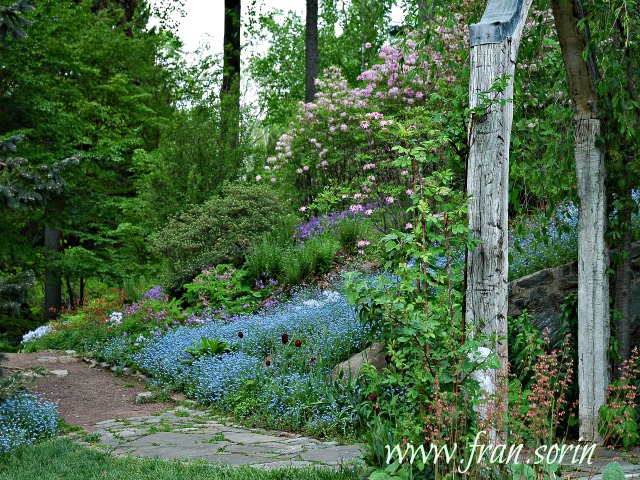I have thought about changing my blog name to Gardening on the Edge, which is exactly how I am gardening these days. Each of my gardening spaces follow the footprint of the house. The edge that needed attention was at the side of the house leading up to the side garage door. I get the feeling that the previous owners never walked around there because there were several bushes whose branches would grow at odd angles and grab you as you walked by. We use this way frequently and were tracking dirt intot he house. First step was to remove them leaving only the photinia and the Texas olive at the front and at the back a beautiful Anacacho orchid tree.
In the spring the arching branches hang over the walkway and are reminiscent of times when I had apple and crabapple trees in my garden. The fragrance isn't quite the same but not unpleasant and the bees love the flowers which give them black pollen.
This narrow 7' space is bounded by a low wall with fence on the left had side. On the right the garage wall. There are two scuppers coming off the roof. They carry water of the flat roof which drained away along the bare ground. The first job was to create a place on which the water could land before passing into a proposed wet weather channel. And make it possible to walk past without getting muddy feet.
I marked out a winding channel which David lowered a few inches so water would flow out towards a drain at the front of the house. I knew we did the right thing bringing our pick axes with us.
This is a budget project using rocks abandoned by builders in the area and some taken from areas of our lot where we created more garden space. To add more interest I found a couple of large ones and then filled in with smaller stones.
I wish I had some larger rocks to create a rock garden but as my mother used to say " beggars can't be choosers" This is what I had to work with.
There will only be planting along the left side. I already have some native plants growing from seed( thanks to a gift from Syd Teague) and hopefully they will soften the jagged rocks that I am making do with. By late April native Desert marigold, Bailey multiradiata, and Goodings verbena, Verbena gooddingii, are already flowering. They are short-lived plants but reseed easily. I['m also saving seeds from my very successful damianita and chocolate flower.






.jpeg)
.jpeg)






























































